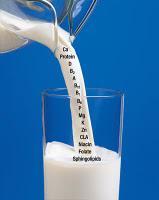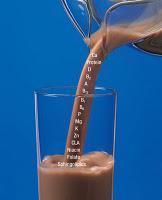

As a Registered Dietitian (RD) who has dedicated more than 30 years of my work and volunteer life to child nutrition, I’m bewildered by the intensity of efforts to ban flavored milk from schools. Petition drives, community forums, hyperbolic sound bites – really? Is this all about 10 or 12 grams of sugar? I wonder if these confrontational tactics are best the thing for improving children’s nutrition. Might our time be better spent collaborating on a school garden, a salad bar, or a campaign to get more calcium into kids?
First, let’s take a look at the facts about the flavored milk served in schools today. This is not a “milkshake” in a plastic bottle nor the flavored milk that you drank in school. In just the past five years, the dairy industry has responded to nutrition concerns and renovated their products dramatically.
- From 2006 to 2011, the average calories in flavored milk decreased by 23 calories – to just under 143 calories in 8 ounces. This is only 39 more calories than white milk.
- Decreasing calories has been accomplished by reducing fat (to fat-free milk) and reducing added sugar. Added sugar in flavored milk has declined by 30% – by 5 grams per cup – over the past 5 years.
- Many dairies now offer flavored milk with just 10 to 12 grams of added sugar per cup. Some anti-flavor activists fail to remember all milk has 12 grams of natural sugar (lactose) straight from the cow!
- For example, the fat-free chocolate milk served in New York City public schools has just 130 calories, 22 grams of total sugar, that’s 12 grams from naturally occurring lactose and 10 grams of added sugar.
Next, let’s keep our eyes on the nutrition prize. While some children in the US are getting too many calories for their activity level, a significant number of children are seriously under-nourished. The 2010 Dietary Guidelines for Americans listed four nutrients of concern for adults and children: calcium, vitamin D, potassium, and dietary fiber. These nutrients are “of concern” because our low consumption can affect our health today and in the future. Here ‘s how nutrients of concern relate to the flavored milk debate:
- Just like white milk, flavored milk provides three of the nutrients of concern – all of them except dietary fiber.
- All milks are nutrient-rich beverages. They are packed with what kids need for strong bodies – calcium, vitamin D, and potassium, as well as protein, phosphorus, and vitamins A, B12, riboflavin, and niacin.
- Dr. Rachel Johnson (University of Vermont professor and former dean) has studied milk consumption for years. Co-author of Drinking Flavored or Plain Milk Is Positively Associated with Nutrient Intake and Is Not Associated with Adverse Effects on Weight Status in US Children and Adolescents in the April 2008 Journal of the American Dietetic Association, Johnson has noted that “the battle against chocolate milk may be the wrong one.”
Finally, let’s figure out how to work together to improve nutrition in schools and for families, especially those in low-income, at-risk neighborhoods. Improving child nutrition in the US is going to take serious collaboration – among parents, dietitians, chefs, and school nutrition professionals.
Banning flavored milk might have the potential for a tiny reduction in calories. However, several national and local studies have confirmed that it is also likely to reduce overall milk consumption. Is this really a smart approach? No one – not even dairy advocates – is suggesting that we should push flavored at kids. Let’s have fat-free flavored milk as one option in school cafeteria. Let’s not throw important nutrients out with misplaced concerns about small amounts of sugar.
Let’s put our passion for child nutrition toward effective collaborations on positive ways to improve access to delicious nutrient-rich, more-locally sourced foods at school and at home. Let’s get together on School Gardens, local Farm-to-School projects, and helping kids build “Best Bones Forever.”
Dayle Hayes, MS, RD, president of Nutrition for the Future, Inc., blogs at Nutrition for the Future and showcases the school nutrition revolution at School Meals That Rock. She is the immediate Past-Chair of the School Nutrition Services Dietetic Practice Group of the American Dietetic Association and also Co-Chair of Billings Action for Healthy Kids in her hometown of Billings, Montana. Dayle is proud to work with the dairy farm families represented by National Dairy Council and regional dairy councils, such as Western Dairy Association.

